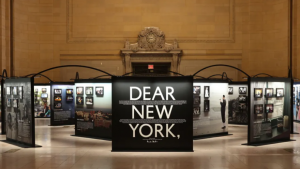Self-proclaimed post-colonial hybrid and renowned British-Nigerian artist Yinka Shonibare CBE unveiled new works in an exhibition interrogating how systems of power affect sites of refuge. It further offers debates on public statues, the ecological impact of colonisation, and the legacy of imperialism on conflict and consequential attempts at peace. Titled Suspended States, the exhibition – which is the artist’s first London solo showing in more than 20 years – will be presented at Serpentine South until 1 September 2024.
The exhibition includes two major installations: ‘Sanctuary City (2024)’ is composed of miniature buildings, while ‘The War Library’ (2024) consists of 5 000 books bound in Dutch wax print.
‘Sanctuary City (2024)’ presents models of buildings such as Hotel des Mille Collines in Rwanda, the Notre Dame Cathedral in Paris, the Temple of Theseus in Greece and Tokeiji Temple in Japan. Each has been a place of refuge for vulnerable groups and the models are painted black with Dutch wax print interiors illuminated from within in a sombre contemplation of humanitarian needs for shelter around the world.
‘The War Library (2024)’ features 5 000 new books bound in the same Dutch wax print with gold lettering on the spines indicating conflicts and peace treaties with links to imperial ambitions.
‘Suspended States addresses the suspension of boundaries, whether psychological, physical, or geographical — all boundaries of nationhood are in a state of suspense,’ said Shonibare. ‘This is an exhibition in which Western iconography is reimagined and interrogated, at a moment in history when Nationalism, protectionism and hostility towards foreigners is on the rise.’
Other installations in the exhibition include ‘African Bird Magic’, a series of quilts that juxtaposes images of African artefacts which inspired Western Modernism with images of endangered African birds; ‘Unstructured Icons and Cowboy Angels’, which features African masks superimposed over the faces of Western power holders and cowboys; and ‘Decolonised Structures’, with replicas of colonial figures painted in Dutch wax print to query their public authority.
The use of Dutch wax print throughout the exhibition is a Shonibare signature. A symbol of the tangled relationship between Africa and Europe, this brightly coloured fabric was inspired by Indonesian batik designs that were mass-produced by the Dutch and eventually sold to colonies in West Africa.
Read more.







